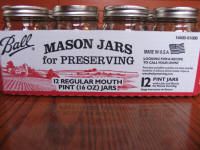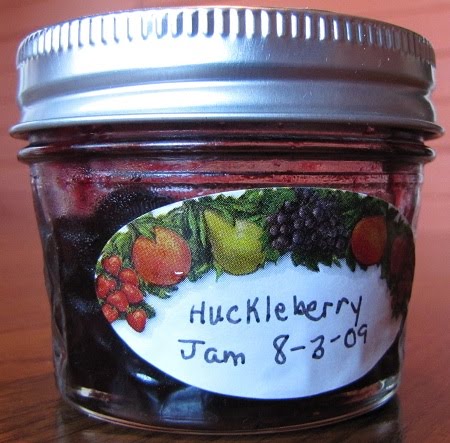Home canning has been a part of my life since I was a newlywed. It was the early 70’s and my husband planted a nice-sized garden that filled the backyard behind our shotgun house. We bought all of the necessary canning supplies in preparation of preserving the vegetables we would have at harvest. David had a dream of being self-sufficient, and he canned some delicious vegetable soup and suggested that we buy bulk vegetables at the New Orleans French Market to preserve. I drew the line when he suggested that I make my own peanut butter. Was he kidding? It was much easier to buy ready-made from the grocery store. My ideas have changed since then, and I wish I would made my own peanut butter.
The canning experience proved productive as I learned safe preserving and acquired a nice 12-quart harvest gold, Presto, pressure cooker. I didn’t can regularly, however, and it wasn’t until the late 80’s that I once again took to preserving food. I canned blackberry jam with berries that were picked in the spillway of southern Louisiana, and made mock-strawberry jam with figs from my neighbor’s trees.
Time went on and it was not until moving to Montana in the 2000’s that I found the desire, and a good reason to can. I took out my 35-year-old canner from the basement closet. My family’s apple trees had produced well, and we picked enough huckleberries and cherries to make home canning worthwhile. I replaced the old gasket and vent plug and mentally prepared for the task of canning. With the help of my old canning book and the Internet I found recipes and reviewed the steps to canning.
By the time fall rolled around, I was in need of more jars and supplies to can the apples. My shopping jaunts took me to various stores, such as big box, grocery, and hardware. I started to get the feeling that jars were getting a little scarce and found out that Clear Jel, an ingredient required for an apple pie filling recipe that I wanted to make, was no where to be found in the valley.
Or so I thought.
Through my research, I had discovered that Clear Jel was used commercially, so I considered checking with a local restaurant supplier until I went to Rosaur’s. While walking past the bakery department, a light bulb went off and I decided to ask if they used Clear Jel. Sure enough they did, so I explained my predicament to the baker of needing ¾ of a cup for a recipe and asked if he would be so kind as to sell me some. “I would be happy to buy a pound of it,” I said. He was very obliging and we both felt good about the transaction.
There are three names that come to mind with home canning…Ball, Kerr, and Mason. Considering I was using Ball’s Fresh Preserving website for reference, I decided to take a look at their history. It’s their 125th anniversary and a time-line made it quick and easy to get an overview of the Ball Brother’s Glass Manufacturing Company.
- Prior to the 1830’s, most food was used seasonally or preserved by drying, pickling, or smoking. Jars were available for canning using the wax sealing method, which was messy, inefficient, and oftentimes allowed bacteria to enter and spoil the food. In 1858, a tinsmith, John L. Mason invented the Mason Jar; a square shouldered jar with a threaded screw top and lid with a rubber ring for an airtight seal. It revolutionized home preserving.
- The Ball Brother’s Glass Manufacturing Company entered the picture in 1880 and began producing fruit jars in 1884. The Kerr Group introduced its brand in 1903 in Portland, Oregon. Perhaps that has something to do with why Oregon is one of the states big on canning as are Utah, Idaho, and Montana.
- Ball Fruit Pectin was introduced in 1988 and 14 years later the No-Cook Freezer Jam Pectin hit the shelves. In 2005, Ball started marketing the Plastic Freezer Jars as an easy way to preserve homemade jams. I used those that year to freeze some apricot preserves which I had made. Personally, I think it’s just a cop out way to feel like you are canning, but if you have time constraints, it is a simple method for preserving a batch of homemade jam.
- John L. Mason’s patent expired in 1879 opening up the market to competition. Ball quit the home canning business in 1993. A subsidiary company of Ball’s, Alltrista, took over the canning end of the business. They later acquired the Kerr Brand in 1996. In 2005, Alltrista changed their name to Jarden Home Brands which includes Ball and Kerr.
For me, home canning means work as it involves a lot of washing and sterilizing of supplies as well as preparing large quantities of produce. You may ask why I do it and the simplest answer is to take advantage of abundant crops and enjoy wholesome foods throughout the year. I like that my kids learn how to preserve and to be self-sufficient. Our preserves are tasty and I get pleasure sharing the fruits of our labor. And to top off the list is the fact that I love looking at those beautiful glass jars full of colorful fruit. And guess what? The jars are Made in America!
Home canning can be compared to hiking in that when it’s over one can relax and let out a sigh of relief and feel the satisfaction of a job well done.
©10/28/09





